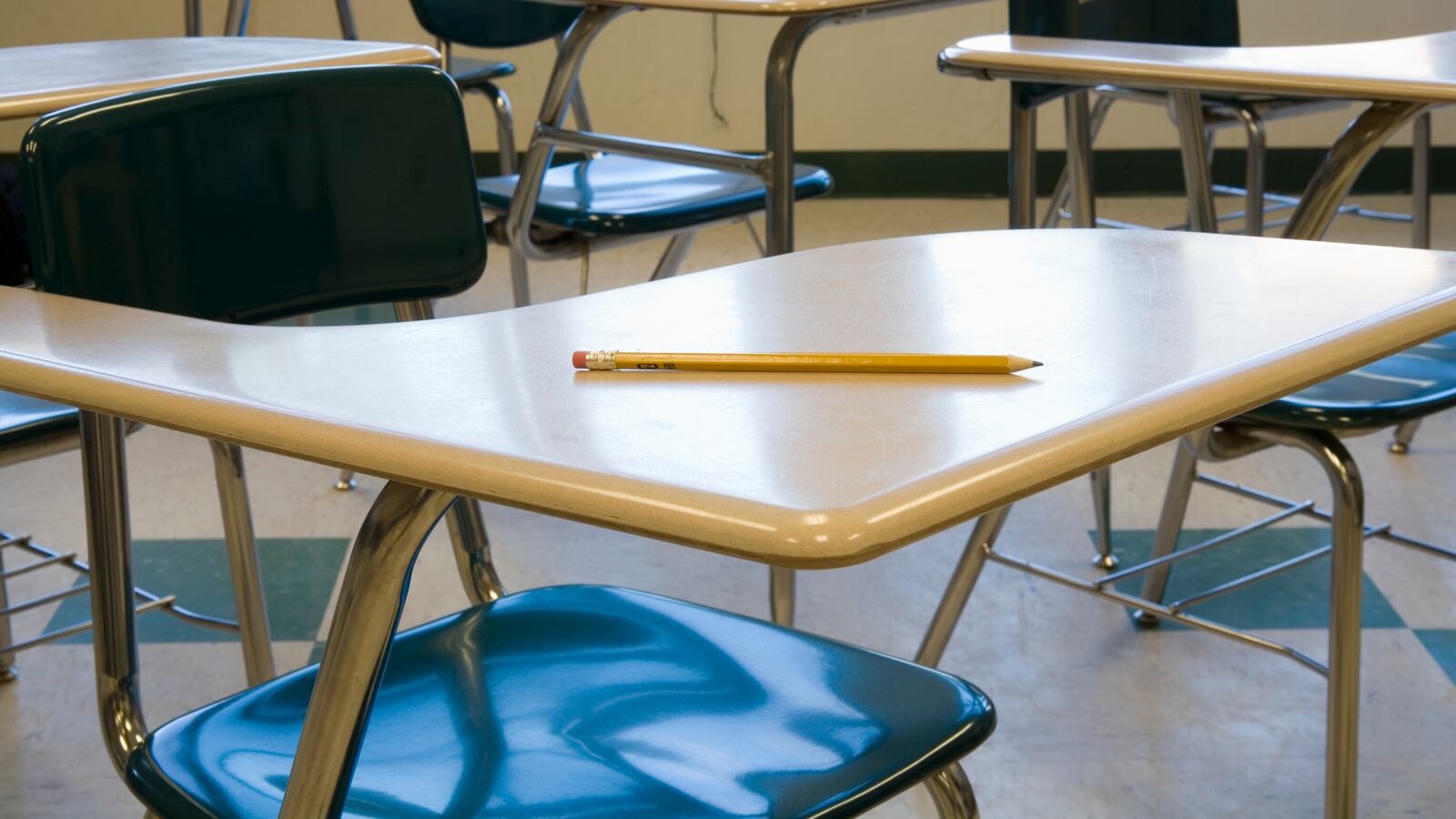Sign up for Chalkbeat Indiana’s free daily newsletter to keep up with Indianapolis Public Schools, Marion County’s township districts, and statewide education news.
If all the Indiana students who miss the most school showed up on one day, they would fill around 3,000 buses.
That’s how an Indiana State Board of Education presentation painted the stark picture of the state’s chronic absenteeism rate, the proportion of students who miss 18 or more days in a school year.
While chronic absenteeism in Indiana has improved this year after worsening during COVID, the rate remains 8 percentage points higher than before the pandemic. And citing the greater absenteeism rates for Black and Hispanic students, as well as those learning English or living in poverty, state board members sought to draw a link between absenteeism and lower test scores for those groups.
“It could absolutely be a root cause,” said Secretary of Education Katie Jenner.
Nationwide, schools have struggled to bring attendance rates back up to prepandemic levels, as families continue to deal with economic hardships, housing instability, and illness, along with students who refuse to attend school.
Indiana state board members acknowledged that after the pandemic, there are more reasons that students might miss school. Still, they focused attention on the correlation between absenteeism and academic performance: Student groups that have recorded the biggest declines in English language arts and math scores since the pandemic have also had higher rates of chronic absenteeism, according to the presentation.
“When you’re not there and present every day, you’re not going to get the same quality of education,” said board member Pat Mapes, who pointed to the same link for specific student groups during an August presentation of state reading test scores.
Absenteeism rates are highest in kindergarten and high school.
Nearly one-third of all Black students were considered chronically absent in 2022-23, compared with 19% in 2018-19. The rate for Hispanic students surged to 24% in 2022-23, from around 13% in 2018-19.
The rate for Asian students doubled in that time frame, from 6% to 12%. For white students, it rose to 16% from 9%.
Absenteeism for English learners — whose academic performance has continued to decline even as other groups’ performance has stabilized — has also doubled since 2018-19.
Board members said parents must be held accountable for getting students to school every day. Board member Greg Gastineau suggested a campaign to spotlight the importance of attendance, adding that more families are taking vacations during the school year.
Meanwhile, the Indiana Department of Education plans to track attendance as one of the indicators in an “early warning system” it’s developing for students who are not on track to graduate.
While the board presentation focused on the absenteeism rate, members also discussed the daily attendance rate, which is calculated in two different ways in Indiana.
The “school focused” calculation divides the number of days that students attended by the total number of days in a year, according to the presentation. By that calculation, the bulk of all Indiana schools have a 90% or greater attendance rate.
With the launch of its new school accountability dashboard this year, the state also began to calculate the percentage of students in each school who have a 94% or better attendance rate. The presentation said that attending school less than that leads to negative academic impacts.
Only 3 in 5 Indiana students met the 94% target last year, meaning they missed fewer than 10 days. The other 40% — or over 400,000 students statewide — missed more.
Aleksandra Appleton covers Indiana education policy and writes about K-12 schools across the state. Contact her at aappleton@chalkbeat.org.

